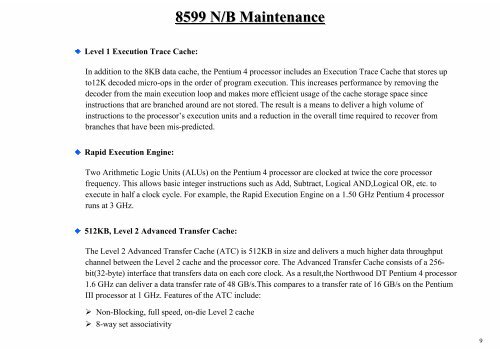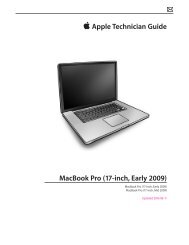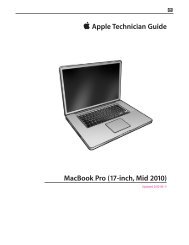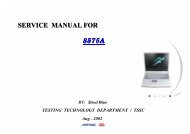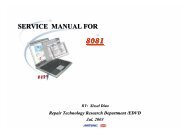mitac 8599.pdf - tim.id.au
mitac 8599.pdf - tim.id.au
mitac 8599.pdf - tim.id.au
Create successful ePaper yourself
Turn your PDF publications into a flip-book with our unique Google optimized e-Paper software.
Level 1 Execution Trace Cache:<br />
8599 N/B Maintenance<br />
In addition to the 8KB data cache, the Pentium 4 processor includes an Execution Trace Cache that stores up<br />
to12K decoded micro-ops in the order of program execution. This increases performance by removing the<br />
decoder from the main execution loop and makes more efficient usage of the cache storage space since<br />
instructions that are branched around are not stored. The result is a means to deliver a high volume of<br />
instructions to the processor’s execution units and a reduction in the overall <strong>tim</strong>e required to recover from<br />
branches that have been mis-predicted.<br />
Rap<strong>id</strong> Execution Engine:<br />
Two Arithmetic Logic Units (ALUs) on the Pentium 4 processor are clocked at twice the core processor<br />
frequency. This allows basic integer instructions such as Add, Subtract, Logical AND,Logical OR, etc. to<br />
execute in half a clock cycle. For example, the Rap<strong>id</strong> Execution Engine on a 1.50 GHz Pentium 4 processor<br />
runs at 3 GHz.<br />
512KB, Level 2 Advanced Transfer Cache:<br />
The Level 2 Advanced Transfer Cache (ATC) is 512KB in size and delivers a much higher data throughput<br />
channel between the Level 2 cache and the processor core. The Advanced Transfer Cache consists of a 256bit(32-byte)<br />
interface that transfers data on each core clock. As a result,the Northwood DT Pentium 4 processor<br />
1.6 GHz can deliver a data transfer rate of 48 GB/s.This compares to a transfer rate of 16 GB/s on the Pentium<br />
III processor at 1 GHz. Features of the ATC include:<br />
Non-Blocking, full speed, on-die Level 2 cache<br />
8-way set associativity<br />
9


